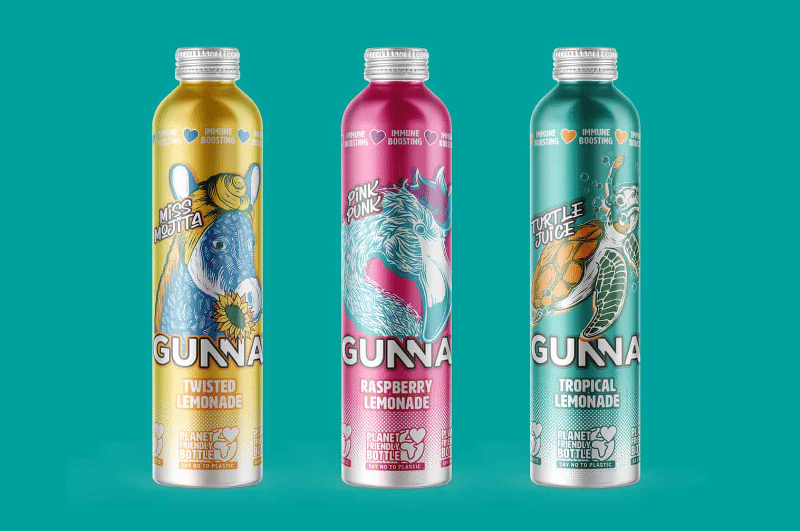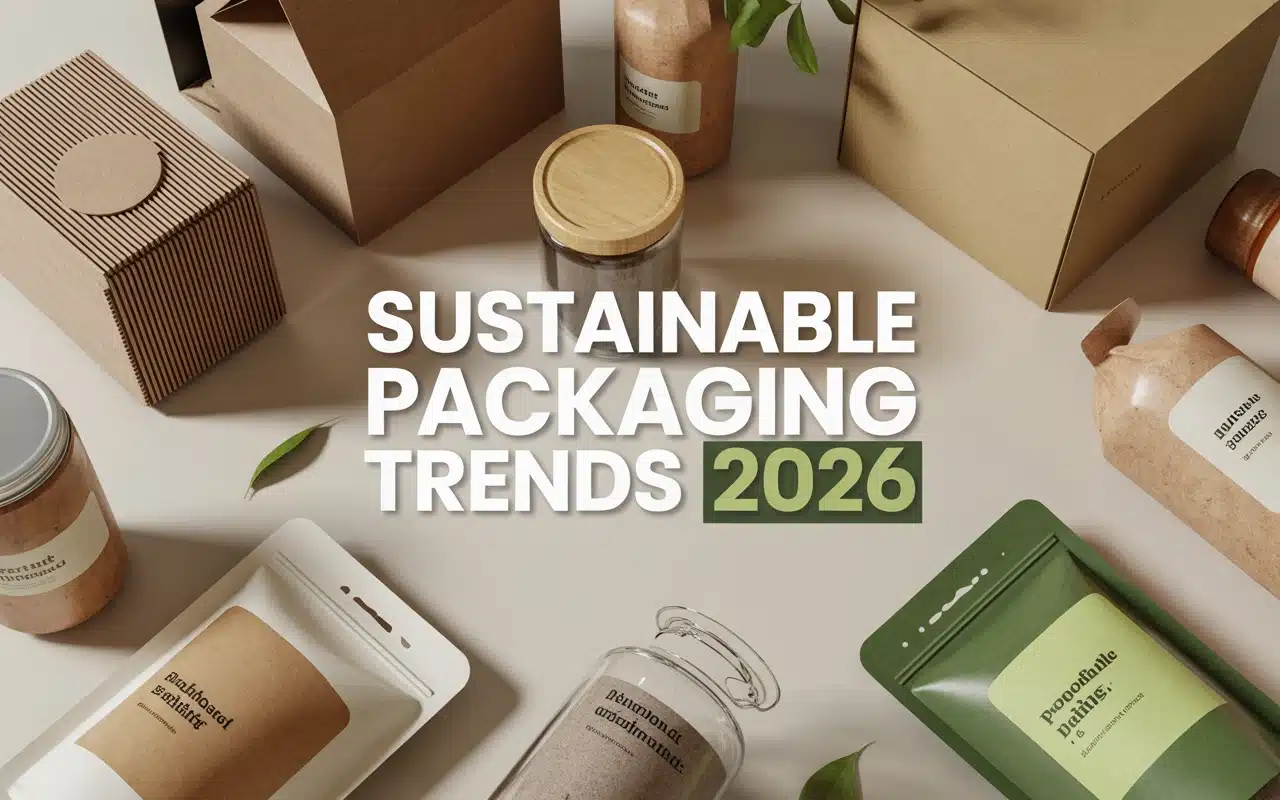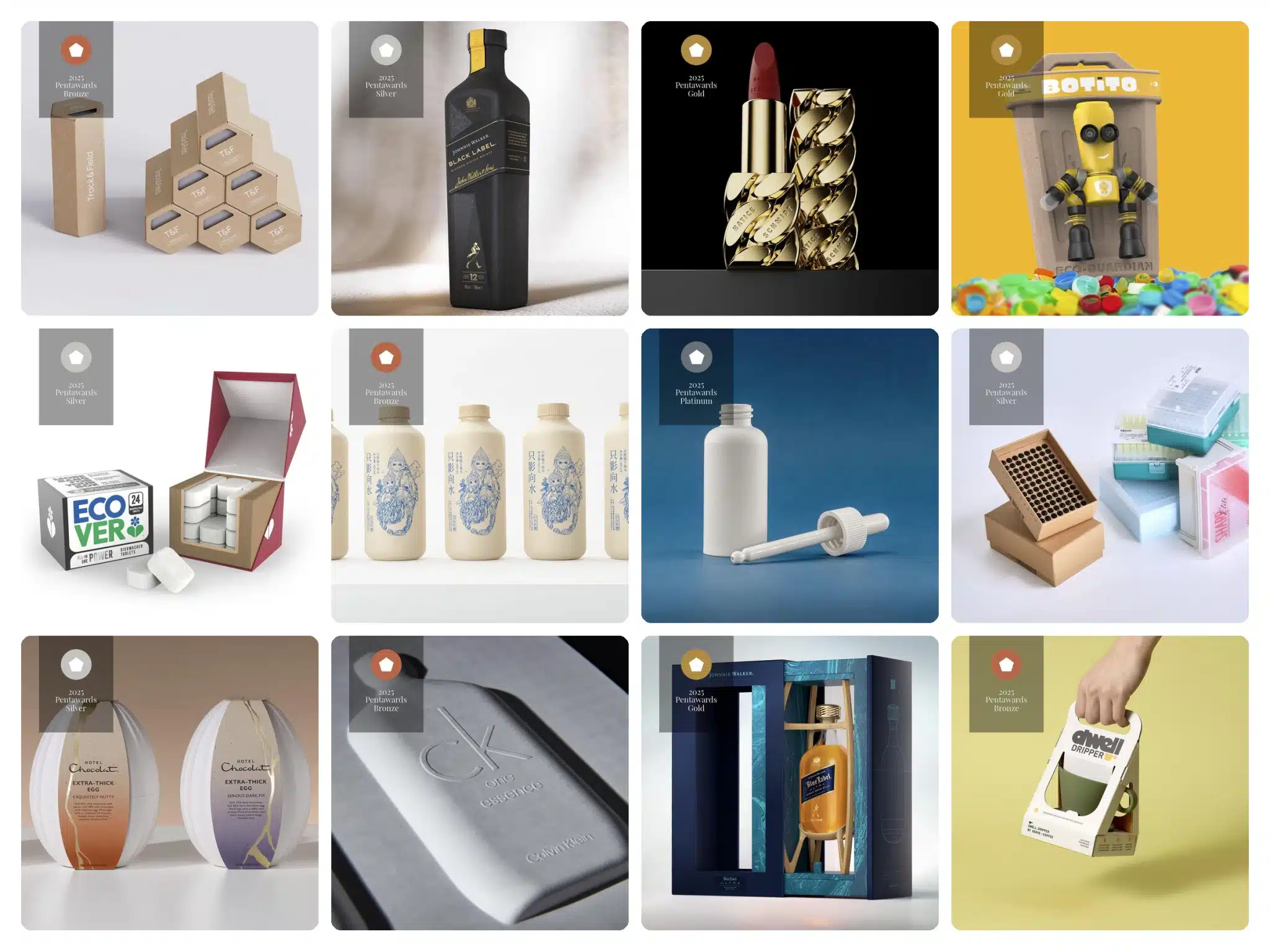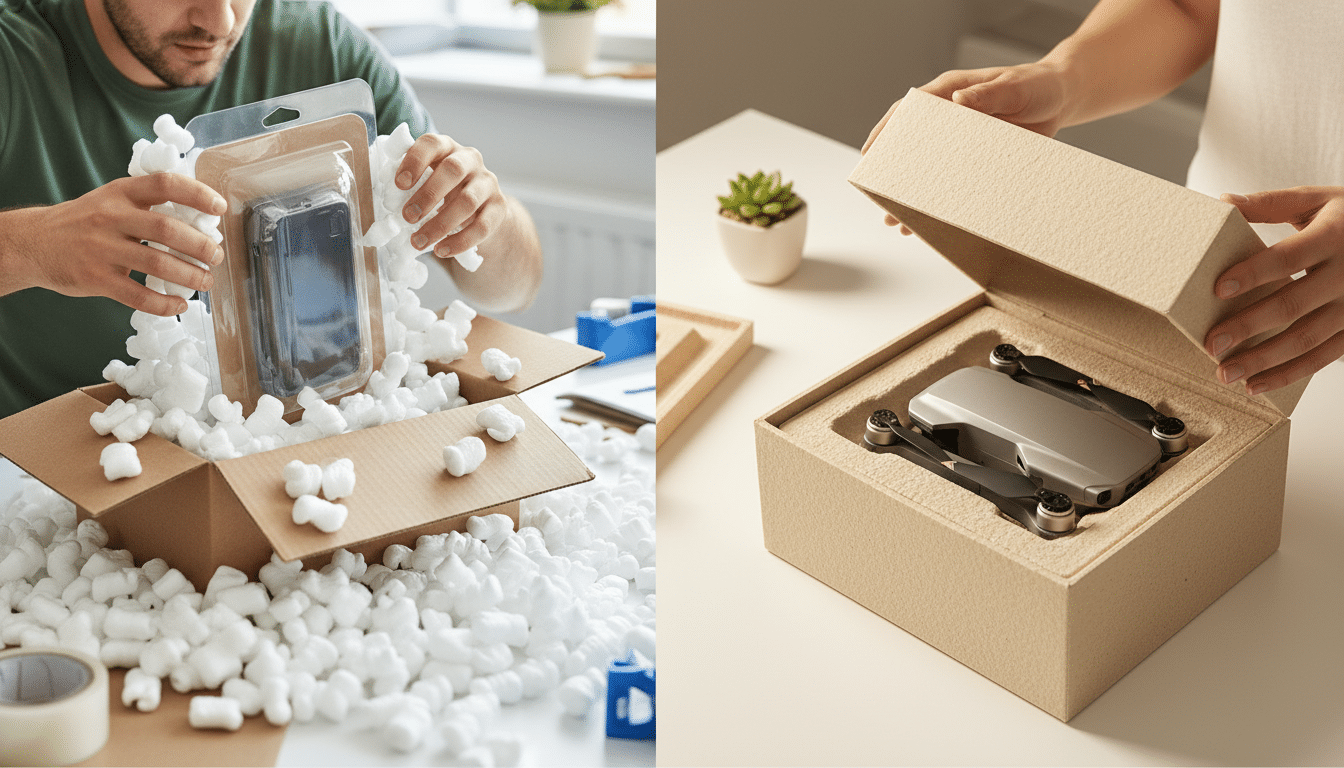With increasingly stringent global environmental regulations, heightened consumer awareness, and accelerated technological innovation, the eco-friendly packaging industry is entering a new phase of upgrading in 2026. Across food, personal care, beauty, electronics, and luxury sectors, “sustainable packaging” is no longer just a bonus but a “ticket” to market competition for brands. This article, combining the EU’s new packaging regulations, the global market, and the latest design cases, systematically reviews the most representative sustainable packaging design ideas of 2026, providing forward-looking references for global companies and designers.
Sustainable Packaging Trends 2026
As we move into 2026, sustainable packaging is making waves worldwide. “Sustainability” is the new buzzword, as stricter rules, higher industry standards, and stronger environmental awareness take hold everywhere. The EU’s new Packaging and Packaging Waste Regulation (PPWR) requires all packaging to be recyclable or compostable, restricts hazardous substances, demands clear labeling about materials and recycling, and pushes for more recycled content. The US, Canada, Japan, Australia, and others are also tightening up rules on plastics, recycling, and carbon footprint reporting. France now charges extra for non-recyclable packaging, and China, India, Southeast Asia, and Latin America are all moving quickly to promote greener packaging.
For brands and consumers alike, sustainable packaging is now the minimum standard—not just a bonus. In fact, over 70% of consumers say they’re willing to pay more for sustainable packaging. Major international brands like Unilever, P&G, L’Oréal, Nike, and IKEA are all pledging to make 100% of their packaging recyclable, renewable, or biodegradable by 2030.
1. Stricter Global Regulations: From Voluntary to Mandatory
2026 is a turning point: The EU’s new rules require over 70% of packaging to be recycled. There are also tougher restrictions on heavy metals, and plastic packaging must contain at least 30–50% recycled material. In France, non-recyclable packaging is taxed at €0.8 per kilo—a policy likely to spread across Europe.
2. Carbon Footprint Disclosure Becomes Standard
With the global push for net zero emissions by 2050, brands must now measure and publicly share the carbon footprint of their packaging—from raw materials to disposal. This will directly impact how companies are rated for environmental and social responsibility (ESG).
3. Global Spread of Extended Producer Responsibility (EPR)
More than 50 countries now require brands to take financial responsibility for collecting and recycling their packaging waste. In 2026, the US, Japan, and others will further strengthen these laws, pushing companies to design packaging that’s easier to recycle.
4. Green Trade Barriers
Countries are starting to charge extra tariffs on imported packaging with high carbon footprints. If brands don’t use low-carbon, sustainable packaging, they risk losing access to lucrative markets.
Top 15 Best Sustainable Packaging Design Ideas 2026
In 2026, global sustainable packaging will undergo a profound transformation. Green eco-friendly packaging is no longer just a regulatory requirement, but has become central to brand innovation, corporate responsibility, and market competitiveness. Below, we are going to present 15 of the most rmost influential sustainable packaging ideas, drawing on cutting-edge international cases and technologies.
1. Regenerative Fiberboard
As global packaging regulations place higher demands on carbon emissions and recycling, recycled and carbon-sinking fiberboard have become the preferred packaging materials. This type of fiberboard not only originates from sustainably managed forests but also absorbs significant amounts of carbon dioxide during its growth and manufacturing processes, achieving carbon neutrality or even carbon negative emissions. The production process strictly adheres to international certifications such as FSC and PEFC, maximizing recycling.
Application Case:
Many international food, consumer goods, and electronics brands have completely replaced their outer packaging with recycled fiberboard. For example, Nestlé and Unilever, among others, use certified recyclable fiberboard materials for their coffee, chocolate, and personal care products in the European market, emphasizing low-carbon and closed-loop management from raw materials to printing.
Benefits:
Recycled cardboard enhances a brand’s green image, reduces its carbon footprint, easily meets regulatory requirements in the EU, North America, and Asia Pacific, and strengthens consumer trust through transparent material traceability.
2. Carbon-negative Inks & Compostable Coatings
Traditional petrochemical inks and plastic coatings are being phased out due to their high pollution and slow degradation. New-generation carbon-negative inks use renewable raw materials such as algae, plant-based materials, and carbon black. Some products can even absorb carbon during production and use, achieving carbon neutrality or carbon negative status. Compostable coatings, such as PLA and seaweed-based films, can degrade along with the paper base material, completely solving the problem of microplastic residues.
Application Case:
Many coffee chains and food delivery platforms in the US and Northern Europe have widely adopted carbon-negative inks and compostable coatings. For example, Blue Bottle Coffee in the US uses carbon-negative inks for its paper cups, and Notpla in the UK uses algae-based compostable films instead of plastic for all its takeaway containers.
Benefits:
Comprehensively enhances the green attributes of packaging throughout its lifecycle, enabling brands to obtain international environmental certifications such as BPI and EN13432, thus improving global market access and ESG ratings.
3. Mono-material Structures
Multi-material composite packaging has always been a recycling challenge and a key target of regulatory oversight. Mono-material structures simplify packaging to a single material (e.g., all paper, all PE, all aluminum), significantly reducing the difficulty of recycling, sorting, and processing. This is a key design concept for achieving high recycling rates and a circular economy.
Application Case:
Japanese convenience stores and European supermarkets commonly use mono-material structures for beverage bottles, flexible packaging, and daily chemical products. International brands such as Procter & Gamble and Mars also aim to switch over 80% of their SKUs to single materials such as Mono-PE and Mono-PP by 2025, significantly improving recycling rates.
Benefits:
Simplifies packaging structure, reduces recycling costs, helps brands comply with regulations, and meets the stringent global market requirements for recyclability.
4. Bio-based & Upcycled Storytelling
Eco-friendly materials are no longer just substitutes, but new carriers of brand culture and green stories. New biomaterials such as seaweed-based materials, mycelium, bamboo fiber, bagasse, and grape skin are not only sustainable, but also tell stories of raw material traceability and technological innovation through packaging.
Application Case:
Stella McCartney’s grape skin champagne gift box and handbag collaboration with Veuve Clicquot, and Notpla’s seaweed takeout box, both clearly indicate the material source and carbon reduction data on their packaging, allowing consumers to participate in environmental protection.
Benefits:
Materials tell stories, helping brands build a unique identity, enhance product added value and cultural recognition, and strengthen customer loyalty.
5. Compostable & Edible Packaging
Compostable and edible packaging addresses the dual challenges of global plastic reduction and food safety. These packages are mostly made from natural materials such as PLA, seaweed, and starch, and are biodegradable or directly edible after use, achieving “zero waste.”
Application Case:
Ohoo’s edible water balls from Sweden, Notpla’s seaweed film bags, and compostable food containers from numerous domestic and international FMCG and food delivery brands have all been launched on a large scale and received positive consumer feedback.
Benefits:
Significantly reduces plastic pollution, enhances the consumer experience, and helps brands gain a leading position in regulations and the market.
6. Lightweight Luxury & Aluminum Comeback
High-end packaging is shifting from “heavy” to “light,” emphasizing low carbon emissions, recyclability, and the inherent premium feel of the materials. Aluminum is not only lightweight, aesthetically pleasing, and recyclable, but it can also be combined with glass, paper, and other materials to meet the dual needs of luxury brands for environmental protection and aesthetics.
Application Case:
Johnnie Walker Blue Label Ultra whisky uses a lightweight glass bottle with an aluminum cap, and the Boomii cosmetic case uses aluminum and recycled stainless steel, both achieving a unity of high-end feel and circular attributes.
Benefits:
Reduces material usage and carbon emissions, satisfies the “responsibility” and “aesthetics” of high-end brands, and gains favor with high-value consumer groups.
7. Modular & Reusable Packaging
Modular and reusable packaging structures are becoming a new trend in e-commerce, express delivery, and footwear industries. Through detachable, foldable, and reconfigurable designs, packaging can be transformed into storage boxes, pet houses, display shelves, etc., after product use, extending the product’s life cycle.
Application Case:
P-box shipping boxes can be folded into cat beds; Cariuma shoe boxes can be converted into storage boxes; multiple e-commerce platforms promote reusable packaging bags that offer returns and points, effectively improving packaging reuse rates.
Benefits:
Extends packaging life cycle, reduces single-use waste, enhances user engagement and interactive experience, and improves brand reputation.
8. Paper Over Plastic
Continuous advancements in paper-based packaging technology, such as pulp molding, high-strength cardboard, and plant-based coatings, provide more environmentally friendly plastic alternatives for industries like food, FMCG, and electronics. Paper packaging is easy to recycle and can be printed with rich information, making it easier for consumers to understand and use.
Application Case:
European supermarket fruit and vegetable packaging, KFC China’s paper straws and pulp food containers, and Nestlé coffee capsule boxes have all replaced most of their original plastic packaging with paper-based materials.
Benefits:
Significantly increases recycling rates, reduces plastic pollution, and facilitates rapid adoption and regulatory compliance in emerging markets.
9. Smart Packaging & Transparency
Smart packaging utilizes digital technologies such as QR codes, NFC, and RFID, allowing consumers to scan codes to learn about product traceability, material information, environmental certifications, and recycling methods. Blockchain traceability and digital watermarking technologies further enhance packaging transparency and traceability.
Application Case:
GS1 Digital Link has been widely adopted in the food, pharmaceutical, and cosmetics industries; Nestlé, P&G, and other brands have added QR codes for material traceability and recycling guidance to their packaging, increasing user trust.
Benefits:
Enhances brand transparency and ESG performance, promotes consumer participation in green recycling, and improves brand reputation.
10. Zero-waste & Net-Zero Operations
Green packaging is not only reflected in materials and design, but also in the company’s own production and operations. More and more companies are obtaining international certifications such as EcoVadis and SGP through green energy, end-to-end recycling, and carbon offsetting, achieving “zero waste” and “carbon neutrality” from raw material procurement to packaging delivery.
Application Case:
Google announced that it will achieve zero plastic in its packaging by 2025; Amazon’s North American supply chain removed 95% of its plastic cushioning, replacing it with recycled paper; Takeda Pharmaceutical’s packaging uses 50% sustainable paper materials and has obtained comprehensive green factory certification.
Benefits:
As a green procurement standard for the supply chain, it helps brands achieve ESG performance, wins global regulatory and market recognition, and becomes the preferred partner for major international clients and capital markets.
11. Soluble & Water-soluble Packaging
With increasingly stringent environmental regulations, some fast-moving consumer goods (FMCG) and daily chemical products are using water-soluble films or other soluble materials such as PVA for their packaging. These materials dissolve directly in water after use, leaving no solid waste and significantly reducing environmental pressure.
Application Case:
European daily chemical brands have launched soluble laundry detergent pod packaging bags, and many domestic and international children’s wipes and face towels have adopted soluble paper packaging, which has been well-received by the market.
Benefits:
Innovative environmental experience, significantly reduced waste disposal pressure, and easy adoption in urban and rural markets.
12. Carbon Footprint Labeling & LCA Transparency
Global regulations are driving companies to proactively disclose their packaging’s carbon footprint and life-cycle environmental impact. LCA (Life Cycle Assessment) software and carbon labeling have become industry standard tools, with brands publicly displaying emission reduction data on their packaging, improving transparency.
Application Case:
Cambio coffee capsule packaging displays carbon emission reduction data; L’Oréal, Unilever, and others proactively disclose their packaging’s life-cycle LCA reports.
Benefits:
Enhance brand social responsibility, help consumers make rational choices, and continuously optimize green supply chain management.
13. Design for Social Good
Packaging design is no longer limited to environmental protection but also carries social responsibility. By sourcing materials produced by disadvantaged groups, supporting public welfare projects, or using positive labels, brands create heartwarming stories.
Application Case:
The packaging of the Gifted by Freefrom brand is entirely handmade by survivors of domestic violence, with profits donated to charity, gaining widespread social attention and recognition.
Benefits:
Enhance brand warmth and loyalty, helping companies achieve sustainable social impact.
14. Certification & Material Responsibility
The EU, the US, and other countries require full traceability and responsibility disclosure for packaging materials. International certifications such as RSPO, BPI, FSC, and SGP have become passports to the high-end market, and material responsibility lists have become a new standard for brands.
Application Case:
L’Oréal, Google, Unilever, and others proactively disclose their material lists; luxury brands require 100% RSPO and other certifications.
Benefits:
A transparent and compliant supply chain enhances the brand’s international competitiveness and meets the requirements of high-value customers and regulatory agencies.
15. Automation & Digital Printing
Digital printing and automated production significantly reduce material waste and energy consumption. Small-batch customization and flexible production have become mainstream, supporting personalized and diversified packaging needs.
Application Case:
Companies like VistaPrint and Meyers have achieved “on-demand production and zero inventory,” enabling European and American brands to quickly respond to the market with small-batch customized packaging.
Benefits:
Reduces resource waste, adapts to diverse brand needs, and improves overall environmental protection and efficiency.

















